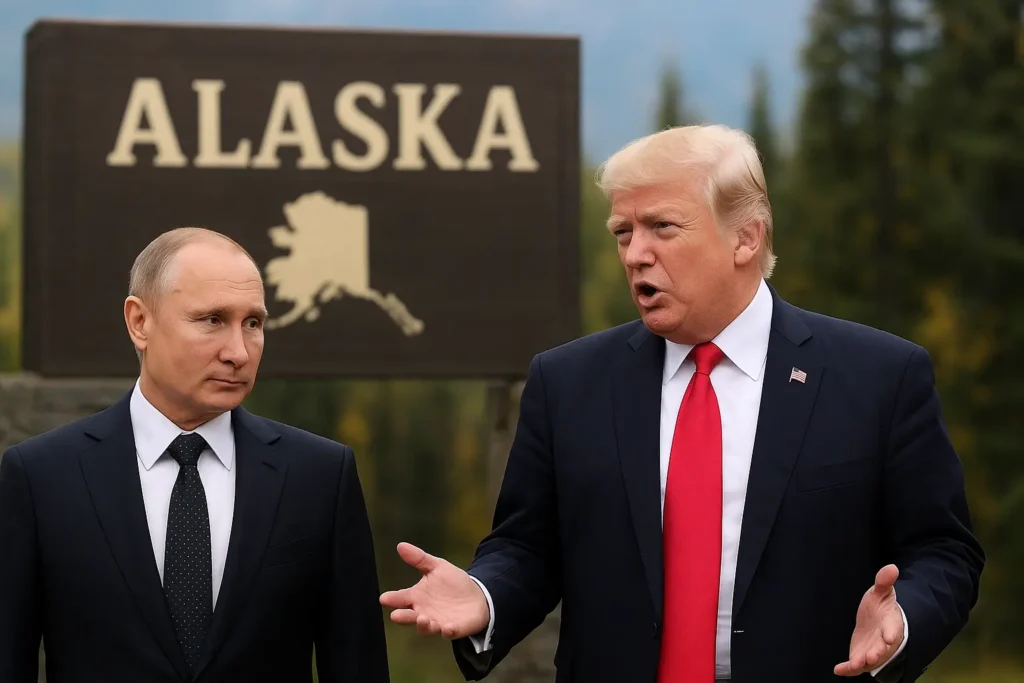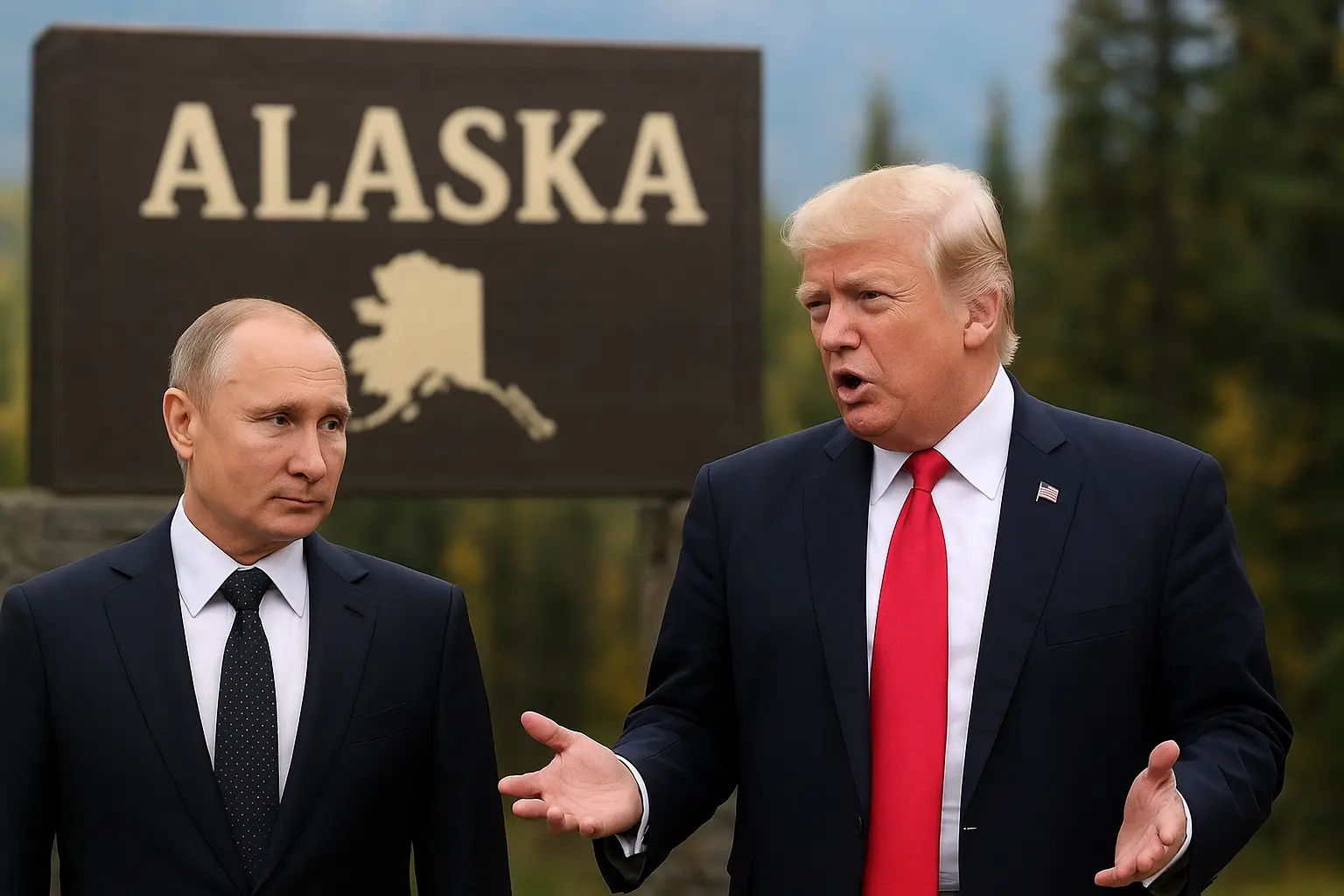Trump and Putin’s Alaska summit revealed key takeaways on Ukraine, sanctions, energy, and global security. Explore how the talks may impact geopolitics and markets worldwide.
Introduction
The world turned its eyes to Alaska as former U.S. President Donald Trump and Russian President Vladimir Putin met in a high-stakes summit that combined geopolitics, energy, and security concerns. The rare setting—Alaska, a symbolic region linking the U.S. and Russia geographically—added weight to the discussions, fueling global headlines.
This summit carried huge implications not only for U.S.-Russia relations but also for Europe, Asia, and the global economy. From Ukraine tensions to energy cooperation and security guarantees, the Alaska summit revealed both opportunities and fractures in an already complex geopolitical landscape.
In this blog, we’ll break down the key takeaways from the Trump-Putin summit in Alaska, explain what they mean for world politics, and explore how financial markets may react in the coming weeks.
Why Alaska Was Chosen as the Summit Venue
Symbolism of Alaska
Alaska was not just a convenient meeting point; it carried historical and strategic symbolism. Once part of the Russian Empire before being sold to the United States in 1867, Alaska has long been a bridge between the two nations—culturally, geographically, and politically.
By meeting in Alaska, Trump and Putin sent a clear message: this was a dialogue between equals, held in a region with shared history.
Strategic Neutrality
Unlike European capitals where most summits take place, Alaska offered a neutral backdrop free from NATO or EU influences, allowing both leaders to discuss sensitive issues without constant Western oversight.
Ukraine – The Core of the Summit
Territorial Disputes
The most pressing issue was, unsurprisingly, the war in Ukraine. While Trump did not signal any change in U.S. policy, reports suggest he emphasized that Ukraine must have the final say in any potential territorial compromises. This statement grabbed global attention, signaling that Washington might support talks but not dictate terms.
Russia’s Position
Putin, for his part, pushed for recognition of Russia’s control over contested regions. However, Trump reportedly pushed back, stressing that sanctions would remain in place unless tangible progress was made toward peace.

Sanctions and Economic Pressure
Severe Sanctions Looming
Ahead of the summit, Trump confirmed plans for “economically severe” sanctions on Russia if it continued aggressive actions in Ukraine. This tough stance was echoed in Alaska, with the U.S. ready to tighten restrictions on energy exports, banking, and high-tech imports to Russia.
Market Impact
Global markets are already bracing for volatility. Analysts warn that oil and natural gas prices could surge if sanctions limit Russian exports further. For Americans, this could translate into higher fuel and heating costs, adding to inflation pressures.
Energy Diplomacy and Europe’s Concerns
Natural Gas and Oil Supplies
Energy dominated discussions. Putin emphasized Russia’s role as a global energy supplier, while Trump highlighted the U.S.’s push for energy independence and LNG exports to Europe.
The key takeaway: Europe may face a renewed energy crunch if tensions escalate, forcing it to diversify away from Russian supplies faster than expected.
Climate Angle
Interestingly, Alaska’s melting Arctic was also raised. Both leaders acknowledged the strategic importance of the Arctic shipping routes opening due to climate change, though concrete cooperation remains uncertain.
Security and NATO Implications
NATO’s Eastern Front
Trump reportedly pressed Putin on NATO security guarantees, insisting that any Russian escalations in Eastern Europe would be met with firm U.S. and allied responses.
Military Posture
Alaska’s role as a U.S. military outpost in the Arctic was also a backdrop reminder to Russia that America maintains strong strategic positioning near Russian borders.
Cybersecurity and Election Interference
Trump’s Warning
One of the most sensitive topics was cybersecurity. Trump warned Putin against meddling in future U.S. elections, citing past allegations of Russian interference.
Putin’s Denial
Putin denied any wrongdoing, but both sides reportedly agreed to consider a joint cybersecurity task force, although skepticism remains high.
Global Reactions to the Alaska Summit
Europe’s Nervous Watch
European leaders expressed mixed feelings. While some welcomed dialogue, others feared that Trump might concede too much, undermining Western unity against Russia.
China’s Calculations
China closely monitored the summit. A U.S.-Russia thaw could weaken Beijing’s partnership with Moscow, but if tensions worsen, China may benefit from discounted Russian energy imports.
Financial Market Takeaways
- Energy Prices – Crude oil and natural gas could spike if sanctions intensify.
- Defense Stocks – NATO-related defense spending may rise, benefiting U.S. defense companies.
- Safe Havens – Expect renewed investor interest in gold, U.S. Treasuries, and the dollar if tensions escalate.
- Tech and Cybersecurity – Cybersecurity stocks may surge as threats and government contracts grow.

The Bigger Picture
The Trump-Putin summit in Alaska revealed no breakthrough but delivered clear signals:
- The U.S. will not ease sanctions easily.
- Ukraine’s sovereignty remains central to Washington’s policy.
- Energy and security dominate U.S.-Russia relations.
For global readers, the message is simple: expect geopolitical tensions to keep influencing markets, fuel prices, and international diplomacy.
Conclusion
The Alaska summit between Trump and Putin was a symbolic and strategic event that underlined how fragile and complex U.S.-Russia relations remain. While no sweeping deals were struck, the discussions set the tone for future diplomacy and economic confrontation.
For everyday readers—from investors in New York to policymakers in Brussels and energy consumers worldwide—the Alaska summit was a reminder that geopolitics directly affects wallets, fuel prices, and global stability.
Also check It
Inflation Holds Steady at 2.7%, But Trump’s Tariffs Push Up Prices for Key Goods
How to Refinance Your Mortgage in 2025 (Step-by-Step Guide to Big Savings)
AI Search Startup Perplexity Shocks Tech World With $34.5 Billion Bid for Google Chrome
US Dollar Holds Firm Ahead of CPI Report and China Tariff Deadline
Oil Prices Dip as Geopolitical Optimism and U.S. Tariffs Weigh on Markets
